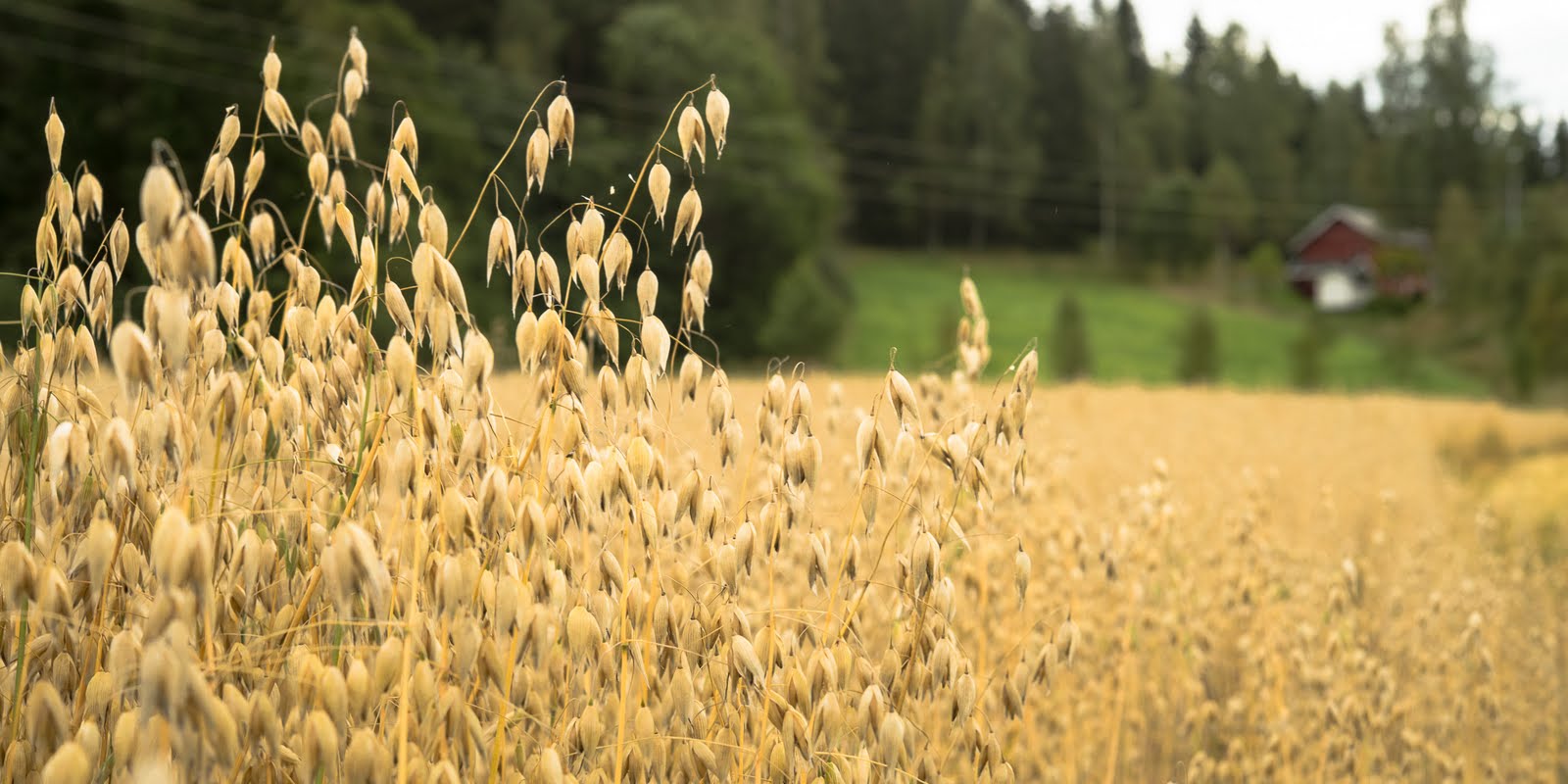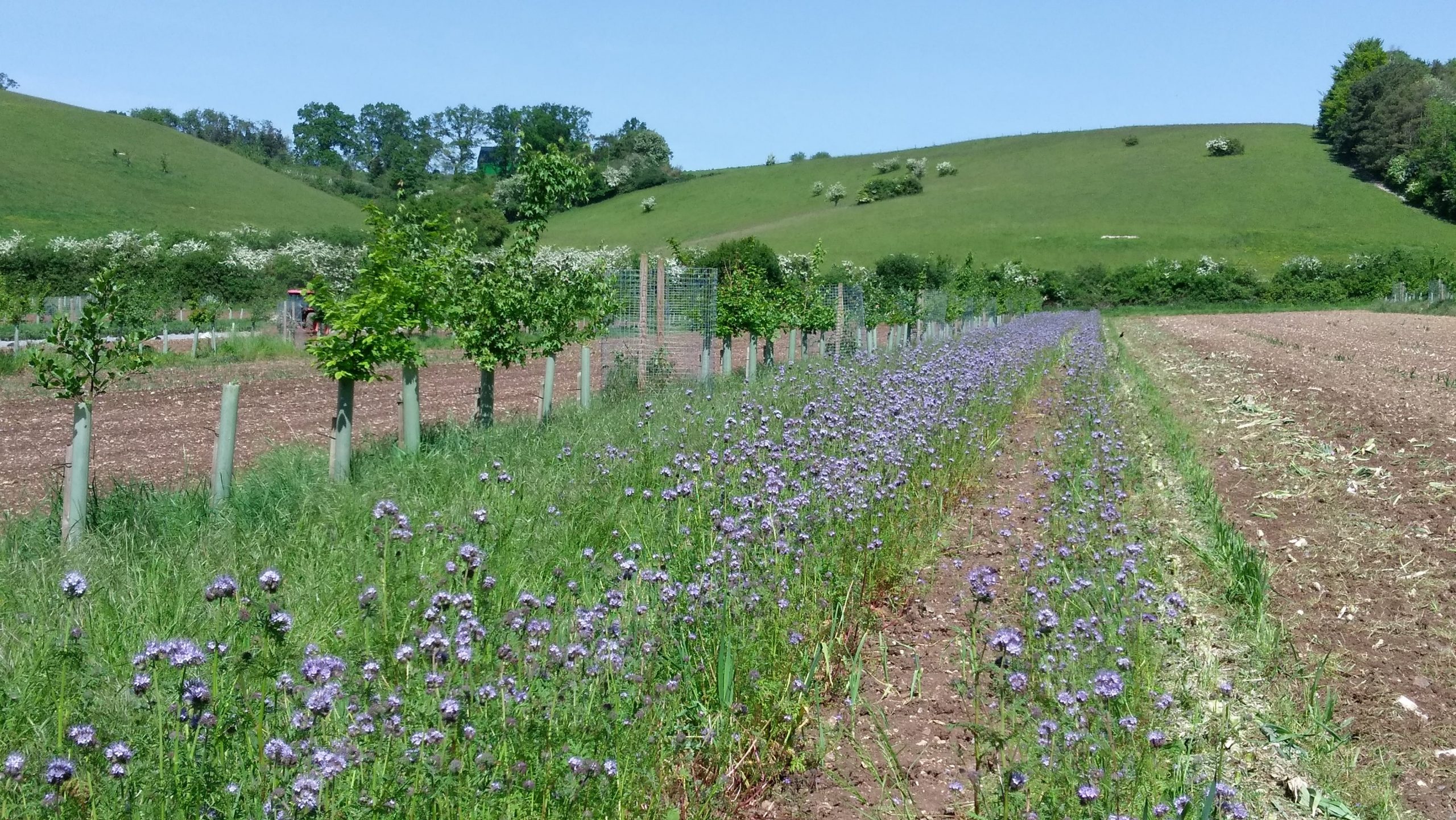Current policies supporting organic farming and biodiversity 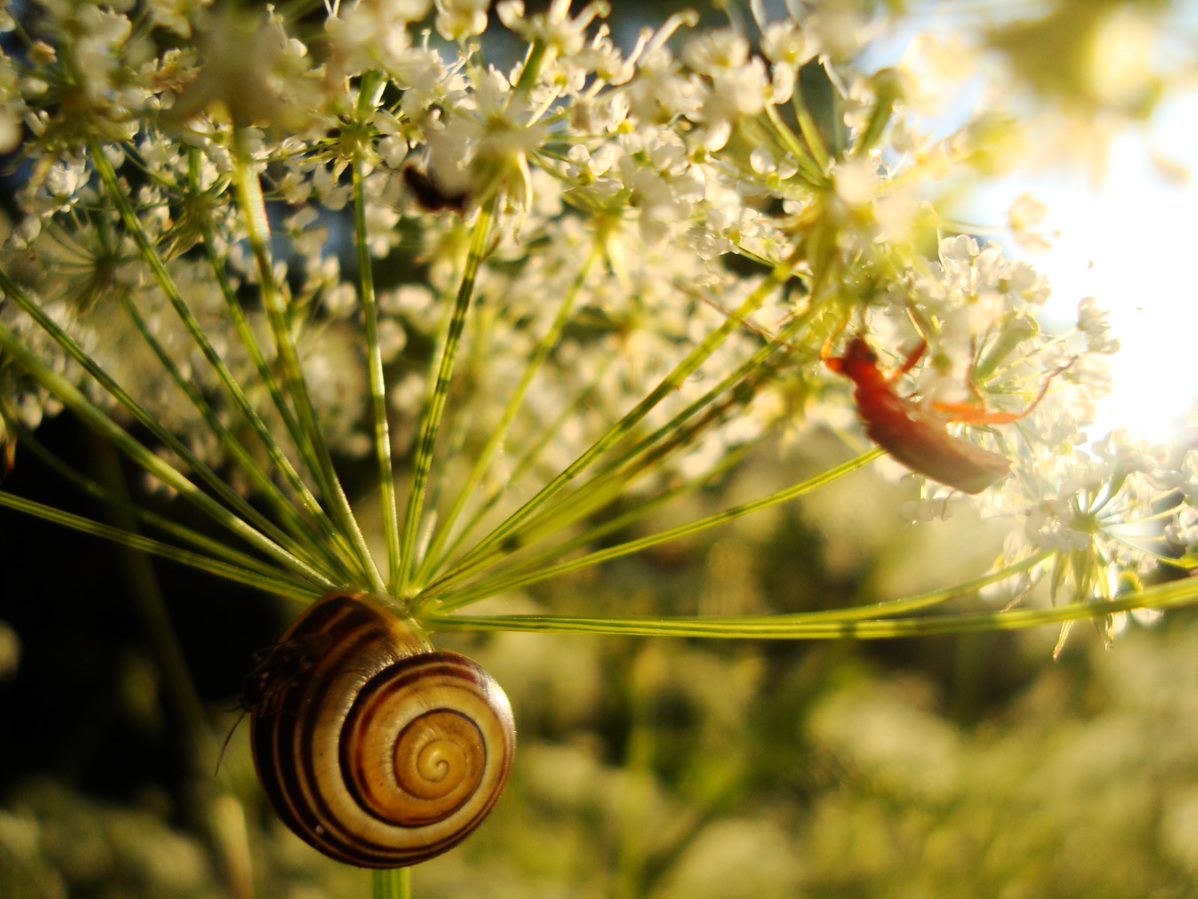
Financial support for conversion to and maintenance of organic farming
Since 1994 (EC Reg.2078/92), support for conversion to and maintenance of organic farming has been an agri-environmental policy measure implemented in almost all EU member states, recognising the environmental benefits of the approach, including biodiversity.
As the land area under organic management in the European Union has grown, from a little over 100 thousand hectares (kha) in 1987 to 13.8 million hectares (Mha) in 2018 (7.5% of EU agricultural area), so too has the expenditure on policy support. By 1997, almost 2.5 Mha were certified and 260 MECU spent annually on support (Lampkin et al., 1999). In 2007, nearly 7.5 Mha were certified and expenditure increased to more than 800 MEUR (Sanders et al., 2011).
A recent review of organic farming policy in the EU by the Thünen Institute (Lampkin and Sanders, 2021) has identified that, in 2018, 8.8 Mha of organic land (64% of the certified organic area) were supported with these payments, at a total cost of over 1.8 billion €, representing about 3% of the CAP budget (Table 4.1). Under the 2014-2020 Rural Development Programme, organic farming support was separated from other agri-environment support, but the expenditure on organic farming amounted to 47% of the amount spent on EU agri-environment support. According to the available data, Denmark, Greece, Croatia, Lithuania and Latvia spent more on organic farming support than on other agri-environment measures, while the UK, Ireland and Malta spent less than 5% on organic, and the Netherlands provided no direct support at all for organic farming.
With the setting of a target for 25% of EU agricultural land area to be organic by 2030, a further trebling of land area, and potentially expenditure, is anticipated in the next decade.
While conversion and maintenance support were combined with agri-environment support in the policy periods 1994-1999, 2000-2006 and 2007-2013, from 2014 the situation changed with organic farming support covered by a separate Article 29 (Measure 11) in the overarching Rural Development Regulation 1305/2013. The guidance on implementation of this Article is provided in a separate Measure Fiche. The key features of the support were that:
- Farmers or groups of farmers would be eligible provided that they met the active farmer criterion (this was different to other agri-environmental support (Article 28/Measure 10) which was open to other land managers).
- Payments are usually made on a per hectare basis, differentiated by land use, but may also be made on a per animal or per beehive basis.
- Double funding of organic farming support should be avoided. This was particularly relevant in the context of organic farmers being considered to meet de facto the Greening requirements of the Pillar 1 Basic payment support (see below). It was also relevant to combinations with other agri-environmental support.
- The calculation of payments should be based on income foregone, additional costs and transaction costs. The calculations should take account of changes in land use, yields and livestock numbers, as well as input use and premium prices for organic products.
- Payments are normally subject to the following limits (also applicable where different payments are combined on the same area of land) although higher payments may be made if justified by MS as happened in parts of Germany, Spain and Italy as well as Hungary, Luxemburg, Malta and Wales.
- 600 €/ha per year for annual crops
- 900 €/ha per year for specialised perennial crops
- 450 €/ha per year for other land uses
- The control system for organic farming defined by Regs. 834/2007 and 889/2008 was envisaged as the primary means of verifying compliance with the Article 29 requirements. To this extent, the costs of certification could be considered as a transaction cost for scheme implementation, with up to 20% of support allocatable for this. However, some countries used an alternative RDP Measure for Quality standards to support certification costs.
Table 4.1: Organic farming support payments in EU Member States, 2018

- This support was subject to a co-financing rate of 75% EU (85% in less developed and peripheral regions) and 25% (15%) national funding.
- Member States were encouraged to consider this support in the context of the market situation for organic food, and to adopt a strategic approach to policy integration in the context of organic action plans. Linkages with other RDP measures such as training and advice, investment in physical assets and EIP operational groups should also be considered.
Despite the common guidance on the setting of payments, the rates for organic farming support were highly variable within and between MS (Figs. 4.1 and 4.2), with some countries using a small number of land use categories (e.g., arable, improved grassland), and others highly differentiated rates for individual plant and animal species. This can be challenging as organic farming is closely linked to the market for organic food, and there is the potential for support payments to have a distorting impact on the market.
Figure 4.1: Organic farming maintenance payments (€/ha) for arable crops in EU Member States, 2019
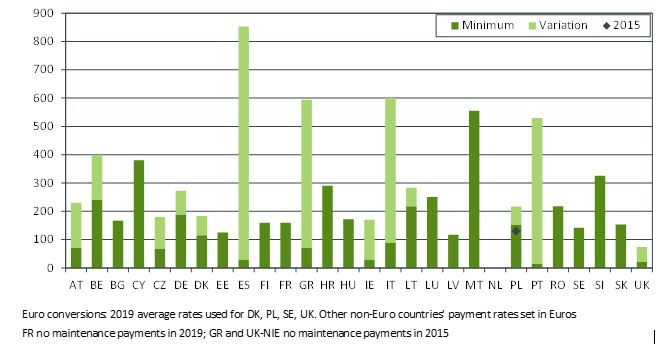
Figure 4.2: Organic farming maintenance payments (€/ha) for grassland in EU Member States, 2019
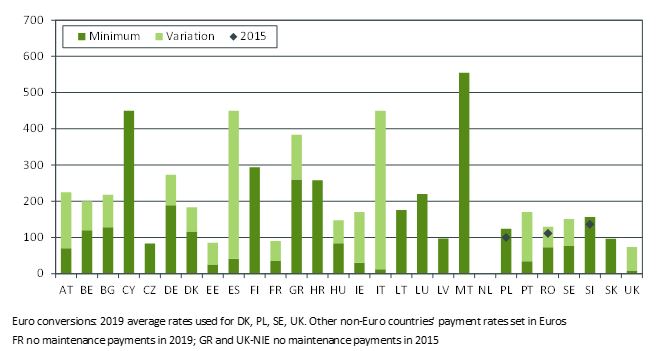
While the basis for the calculation of payment rates – income foregone, additional costs incurred, and transaction costs (including organic certification as a cost of verifying compliance with scheme requirements) – was clearly set out in EU regulations and guidance fiches, the methods applied, and costs included, varied in different countries. Typically for example the income foregone during conversion is higher than once full organic status has been achieved, in part because crops and livestock produced are not eligible for organic premium prices. If a crop of wheat yield 5t/ha attracts a premium of €100/t, then the conversion payment should be €500/ha higher than maintenance for this reason alone. But in very few MS was this the case. In some countries, such as the UK, the percentage of costs compensated was reduced, so as not to create an undue incentive to conversion. In others, such as Spain and Italy, a fixed percentage of 10% or 20% was added to the maintenance payment to create a conversion rate – clearly not taking account of specific costs and income factors during the conversion period. In others, there was no difference at all in support for conversion and for maintenance. The differential between maintenance and conversion payments in all EU countries is also illustrated in IFOAM Organics Europe (2021).
There is also a high degree of variability in eligibility conditions. While in almost all cases management of land and livestock to the standards set out by the EU organic regulation was required, in a few the utilisation of organic land by non-organic livestock appears to be permitted (in a couple of cases with higher payments if organic livestock involved). In Greece, only full-time farmers were eligible for support, excluding a significant number of commercial (active) part-time farmers.
Budgetary constraints also impacted on scheme availability, leading to implementation delays, irregular calls for applications (at 2-3 year intervals) as in Ireland and Bulgaria or the withdrawal of support for maintenance in France and of access to new entrants in other regions such as Wales. In some cases, e.g. Denmark, support for conversion was only available to new entrants – existing organic farmers converting additional land were not eligible. Such administrative constraints can have significant impacts on organic market development, and the ability of the market to support the delivery of environmental benefits by farmers.
Combinations of organic and other agri-environment support
In most countries, combinations with other agri-environmental options are possible, reflecting the tradition of organic farming support integrated with agri-environmental support in previous policy periods. Examples of support that could be combined (usually a limited selection in each country) are:
- Agri-environmental, nutrient budgeting and similar management plans;
- Rare animal breeds and crop varieties (endangered indigenous varieties);
- Use of beneficial insects in greenhouses;
- Use of biological and other alternative pest controls, especially in horticulture;
- Green manures and cover crops on arable land;
- Spring cultivations for crops to reduce nitrate leaching;
- Reduced or minimum tillage systems;
- Intercropping and extended rotations;
- Ecological refuges on arable land for farmland bird species;
- Uncultivated/multi-functional field margins around arable crops;
- Low intensity fertiliser use (including organic manures);
- Increasing soil organic matter;
- Maintenance of winter stubbles;
- Conservation strips within fields;
- Use of environmentally-friendly horticultural methods;
- Maintaining habitats of protected species in arable land;
- Biodiversity conservation and enhancement;
- Improved manure/slurry management and spreading techniques, slurry incorporation;
- Management of grassland for biodiversity/wildlife – restricted mowing and grazing dates;
- Traditional practices for seasonal grazing (pastoralism);
- Pasture grazing for animal welfare;
- Growing flowering plants for pollinators;
- Butterfly protection measures;
- Hamster friendly follow-on crops;
- Grass strips for erosion control and improved management of inter-row spaces in perennial crops;
- Restoration and maintenance of high nature value (HNV) grassland;
- Restrictions on use of grassland for silage;
- Wetland creation and management;
- Conversion or arable to grassland;
- Preservation of hedges and dry stone walls;
- Hedgerow planting, coppicing and laying;
- Maintenance of traditional/extensive hay meadows, orchards and olive groves;
- Planting groves of native trees;
- Bat, bird and bee boxes;
- Wildlife species specific options (Corncrake (Crex crex), cranes, geese, swans);
- Cultivation of papilionaceous flowers;
- Cultivation of fibre flax and fibre hemp using less fertilizing substances;
- Conservation of landscape and archaeological features;
- Water protection, e.g. buffer strips and reduced nitrate leaching;
- Reduction of surface water run-off from land;
- Welfare friendly housing for male breeding animals;
In almost all cases, these combinable options are open to all farmers, not only organic farmers, and some countries report higher participation in AEC options by organic farmers, but it has not been possible to secure reliable data on this.
In Ireland, the measures for individual bird species (Chough, Breeding waders, Geese, Swans, Hen Harriers, Grey Partridge, Twite) can be implemented on organic farms, but only if the organic payment is not claimed on the land involved. The same is true for the environmental management of fallow land, wild bird cover, riparian margins, protection of archaeological monuments on tillage land and low input permanent pasture options. In other countries, such as Poland, Hungary, Estonia and parts of Italy (Bolzano, Trento, Veneto, Puglia, Friuli, Liguria and Sicilia) combinations of any agri-environment measures on the same land are not possible, although in a few of the Italian regions rare breed options can be combined. While the risk of double funding or exceeding maximum payment thresholds in the EU RD regulations were cited as reasons, this meant that opportunities to encourage organic farmers to undertake additional actions to support biodiversity, and to benefit from synergies with the underlying organic management, could be missed.
In other cases, permanent grassland (e.g., in Sweden) was not eligible for organic support, but could access agri-environmental support for grassland biodiversity. In Romania, participating in grassland biodiversity options (such as management of grassland for HNV value or for species of birds such as small eagles, bustards, Crex crex, Lanius minor and Falco vespertinus and butterflies (Maculinea sp.)) was compulsory for grassland receiving organic support. In Czechia, a number of additional measures going beyond organic minimum standards have been directly integrated into the organic farming support scheme, including grassland mowing frequencies and latest cutting dates and the inclusion of green manures with legumes after arable crops. Very few examples of combinations focused on the use of organic farming methods in sensitive areas (e.g. national parks, Natura 2000) were found, although some specific cases exist, for example the Rhön Biosphere Reserve* where organic farming is encouraged in the context of a nature protection region.
Given that organic farming was originally supported (for 21 years) as an agri-environment measure and ongoing support is justified on this basis, combinations with other agri-environment options might be considered normal. There may be valid reasons where combinations of specific options are excluded, for example where:
- Requirements for an option are very similar to organic management, such as restrictions on nitrogen fertiliser or pesticide inputs, and double funding might be involved;
- Agri-environment options target land on farms that is not actively farmed, for example specific wildlife habitats, and therefore would not be eligible for organic farming support payments;
- Agri-environment options requires practices, such as the use of herbicides to control invasive weeds, that are incompatible with organic management – although in these cases there may be opportunities to identify alternative management practices that could be acceptable and deliver similar outcomes.
There may also be a case to include options that are specifically focused on organic farms and the opportunities and challenges that organic management creates. In England, five options† were available for this purpose in the 2014-2020 RDP. As an example, the wild bird seed mixture option permitted organic farmers to use cleanings (weed seeds) from grain as part of the seed mixture, whereas non-organic farms could only use harvested grains. Schleswig-Holstein in Germany also implemented a specific biodiversity measure for organic farmers, focusing on small elements in arable production including reduced field sizes and wildflower strips on a proportion of the land‡.
A source of conflict, or at least frustration, in this context is the setting of payment rates for organic farmers undertaking similar measures to non-organic farmers. This relates in particular to the inclusion of premium prices to offset the income foregone, which is not required for any other schemes than organic. This can result in payments to organic farmers for undertaking the same options being lower than for non-organic farmers, the argument being that the organic market partly compensates for the action, and non-organic farmers do not have access to this market. While it is true that, for some consumers at least, the environmental benefits associated with organic farming are a reason for their willingness to pay more, for many there are other, more personal reasons such as quality, taste or the desire to avoid pesticide residues, so that the whole of the price premium paid cannot be attributed to the biodiversity or other environmental benefits. Organic farmers may not even access any premium price and may for legitimate reasons sell products on conventional markets, while still generating the environmental benefits from their organic land management. Indeed, there is a case that any price premium obtained is more a reflection of the marketing activities undertaken by the farmer, which also incur costs that are not usually included in the income foregone calculations. At the same time, if an agri-environment option involves taking land out of production, then the full value of the organic crop or livestock no longer produced does become a relevant factor.
Organic farming has demonstrated the potential for beneficial combinations with other agri-environment measures in order to build on what is already delivered by organic methods, and to go further than the minimum requirements of organic regulations, in particular with respect to specific habitat and species related measures.
Administrative constraints that prevent combinations being adopted are clearly counter-productive but are still found in many countries. Solutions can be found for double-funding issues where this is a concern. Even better would be the development of nature-focused AEC measures that specifically take account of organic practices.
Greening
RDP support for conversion and maintenance is not the only support available for organic land management. Organic farming also qualified de facto for Greening, representing 30% of Pillar 1 basic funding, which meant that organic farmers were not obliged to meet the same conditions as other farmers concerning crop diversification, protection of permanent grassland and maintenance of 5% ecological focus areas. This was on the basis that organic cropping systems are more diverse per se, with a higher proportion of grassland (temporary leys in the case of arable and horticultural systems) and increased wildlife within crops as well as in field margins. It has been suggested that this provision meant that organic farmers were free to plough up permanent grassland, but other administrative constraints would have inhibited this and there is insufficient evidence to show this was the case in practice.
While organic farmers are not required specifically to provide non-cropped habitat (ecological focus areas), such practices can benefit the farming system by providing refuges for beneficial insects and are therefore considered good practice. Some of the practices that were approved for ecological focus areas, including the production of legumes and catch crops without the use of pesticides, and the maintenance of existing landscape elements such as hedges, would also be considered normal practice on organic farms.
Considering these factors, the de facto recognition of organic land for Greening was appropriate, provided that double funding issues with rural development regulation support could be resolved satisfactorily. This should not normally be a problem, as there are many other practices and prohibitions (e.g. no synthetic nitrogen, herbicides, land-based livestock production) covered by organic regulations that were not requirements for Greening, and that together would have had much greater impact on income foregone calculations.
Corporate support for ecosystem services
Although not widely the case, in some countries, corporate bodies like water companies or agencies have been involved in supporting organic farming in recognition of the value to them of the environmental benefits derived. With less fertiliser and pesticide use, the costs for cleaning up water supplies in catchment areas can be reduced.
The primary example for this type of intervention is in France, albeit focused more on water protection than biodiversity, where some water agencies individually initiated support measures§. For the 2014-2020 RDP, all water agencies became contributors to the French co-financing of Pillar 2 organic support, almost matching the contribution made by the French government. (In the previous RDP, organic farming support had been fully EU financed as a Pillar 1 Article 68 measure.) Some water agencies, such as Eau de Paris, have recently introduced new payments for organic farming, in part as a response to the government withdrawing maintenance support for organic farming in 2018.
In Germany, the Munich water company¶ has also provided support over many years. Also relevant in some German Länder is the use of offsetting schemes, where monies paid by companies undertaking developments to offset the biodiversity and other impacts of their developments can be used to ‘buy’ biodiversity back from specific nature restoration initiatives as well as from organic farms. Retailers are also supporting groups of organic farmers to adopt additional biodiversity conservation measures through supply contracts and higher prices, for example Edeka Nord in partnership with WWF, the organic organisation Biopark and the ZALF research centre#.
In such situations, care needs to be taken to ensure that the support provided does not result in double funding or impact negatively on the support available from other sources. In situations where governments are not funding, or only partly funding, the costs of organic conversion and maintenance, then there may not be an issue with double funding, even if an area-based payment is made by a third party. Indeed, in such situations the third party funding can represent a valuable additional source of support for the viability of organic farms and the continuing delivery of public goods.
There are also potential problems with such payments as they may be considered state aid under EU competition law, particularly where public bodies are involved. To comply with this law, support should either meet the de minimis rule that the payment does not exceed €20,000 per farm over a three year period, or be registered and approved by the EU-Commission to make sure that it does not create market distortion, which can be a lengthy and complex process.
Conclusions
The positive contribution of organic farming to the environment in general and biodiversity in particular has been recognised Europe-wide since the 1990s, when support payments for organic conversion and maintenance were introduced as part of the agri-environmental measures. This is the main source of support for organic farming in the CAP, with an expenditure in 2018 of over 1.8 billion € or 3% of the CAP budget for 8% of the EU’s land area. All member states except the Netherlands have implemented conversion and maintenance support, although budgetary and administrative issues have resulted in intermittent availability in some countries. Within and between countries, individual payment rates can be highly variable. These factors impact on the market-focus of organic farming and the need to balance public and private good perspectives.
The potential to combine organic farming support with other agri-environmental support is also highly variable. In some countries, combinations are possible, except where similar requirements are imposed to those specified under organic regulations. In other countries, combinations are not permitted, due to dual funding or budgetary concerns, or are only possible on a very restricted basis. In very few cases have agri-environment options been developed to specifically capitalise on the baseline provided by organic farming standards.
Organic farming has also been recognised as de facto qualifying for Greening as part of the Pillar 1 direct payments. This is in recognition of the more diverse cropping systems, the importance of grassland for livestock production and the benefits from non-crop habitats in organic systems. While some of the Greening provisions are not specifically required under organic regulations, they represent good practice that would normally be expected on organic farms.
There is potential for public-private partnerships to support the delivery of environmental benefits by organic farmers. Water companies in France and Germany have provided specific support to organic farmers to reduce pollution from agrochemicals in water catchment areas, while in Germany retailers are developing schemes to recognised biodiversity actions through improved marketing opportunities.
